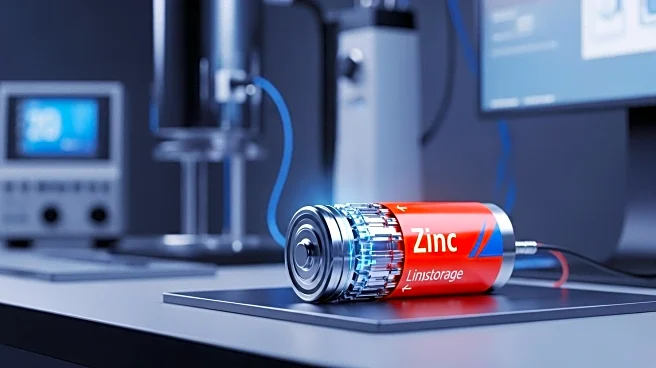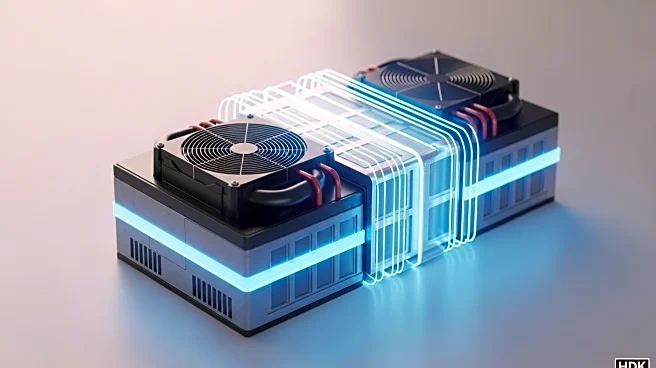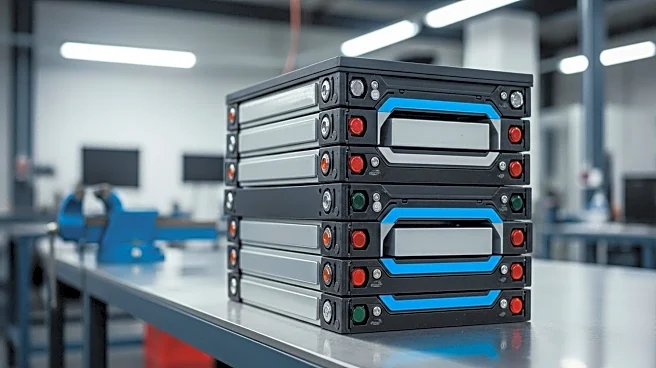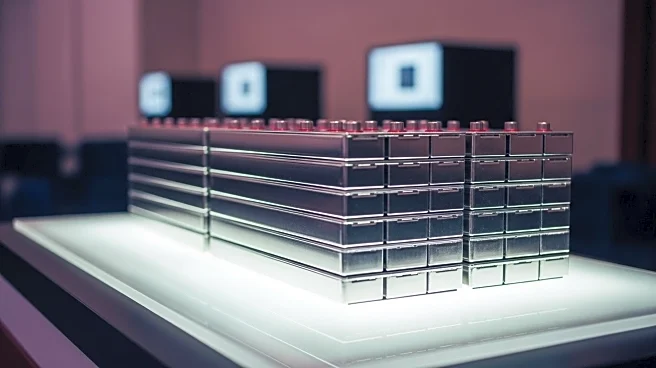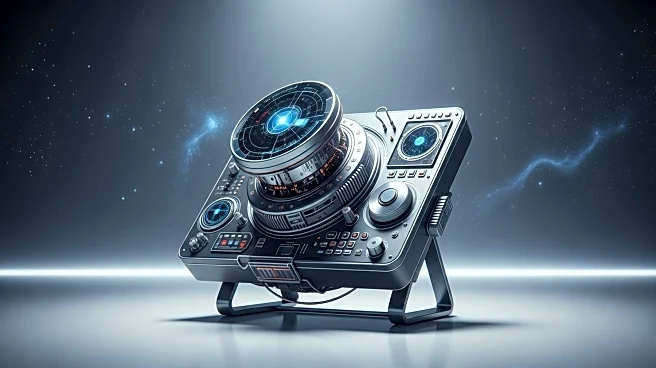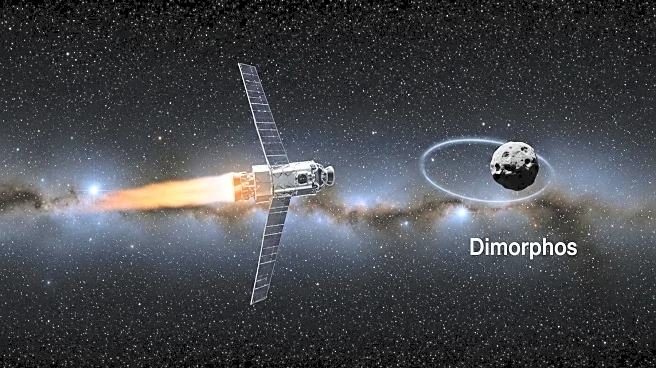What's Happening?
Researchers from NASA's Langley Research Center and NASA Glenn Research Center, in collaboration with Analytical Mechanics Associates Inc, have developed a method to improve the ionic conductivity of solid-state electrolytes (SSEs) using dry-pressed holey graphene as current collectors. Solid-state batteries (SSBs) are considered the future of battery technology due to their higher energy density, versatile geometry, and enhanced safety. However, measuring the ionic conductivity of SSEs has been challenging due to poor interfacial contacts between the SSE pellet and current collector surfaces. Traditionally, high stack pressures are used to improve contact, but this is not feasible for practical applications where low stack pressures are preferred. The introduction of holey graphene, a carbon nanomaterial with high electrical conductivity and unique dry compressibility, significantly improves interfacial contact, allowing for accurate ionic conductivity measurements at low stack pressures. This advancement could lead to more reliable and efficient SSBs.
Why It's Important?
The development of solid-state batteries with improved ionic conductivity has significant implications for various industries, particularly in the fields of electric vehicles and portable electronics. By enhancing the performance and safety of batteries, this research could lead to longer-lasting and more efficient energy storage solutions. The use of holey graphene as a current collector not only addresses the issue of interfacial contact but also allows for more standardized measurement procedures, potentially reducing discrepancies in reported ionic conductivity values. This could accelerate the adoption of SSBs in commercial applications, providing a competitive edge in the rapidly evolving battery market.
What's Next?
The findings from this research suggest a need for the development of standardized measurement procedures for ionic conductivity in solid-state batteries. As the technology progresses, further research and development will likely focus on optimizing the use of holey graphene and exploring its applications in other types of solid-state electrolytes. The potential for scaling up this technology for commercial use will be a key area of interest, with implications for battery manufacturers and industries reliant on advanced energy storage solutions.

